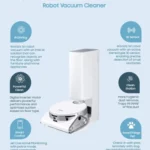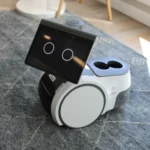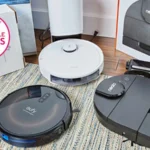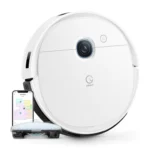With the advancement of technology, the once-futuristic idea of smart homes has now become a reality. From turning on lights with smartphones to controlling thermostats with voice commands, smart home automation has revolutionized the way we live. However, the integration of obstacle detection and avoidance is taking smart homes to a whole new level of efficiency, safety, and control. Strongly intertwined with this evolution are smart vacuum cleaners, which have risen in popularity in recent years. If you’re curious about the benefits and inner workings of integrating obstacle detection and avoidance with smart home automation, keep reading.
The Evolution of Smart Home Automation
The world of Smart Home Automation is constantly expanding and evolving, with new technology being developed every day. What was once a mere convenience has now become a necessity for many households around the world. With an ever-increasing number of appliances and devices being connected to the internet, the possibilities are endless. One of the fascinating and useful areas of smart home automation and integration is obstacle detection and avoidance. This technology has revolutionized the cleaning industry with the introduction of smart vacuums, which can navigate and clean efficiently thanks to their obstacle detection capabilities. In this article, we will explore the evolution of smart home automation and how obstacle detection technology has enhanced the cleaning process. We will also detail the benefits of integrating obstacle detection and avoidance with smart home automation, explain how it works, examine its limitations, and ponder on its future possibilities. To start, let’s take a closer look at the rise of smart vacuum cleaners and their advanced obstacle detection features. If you want to learn more about the benefits of obstacle detection in smart vacuums, check out our article on benefits of obstacle detection in cleaning with smart vacuums.
The Rise of Smart Vacuum Cleaners
In recent years, smart vacuum cleaners have emerged as a popular and convenient addition to the world of smart home automation. These innovative devices are equipped with advanced sensors and algorithms that enable them to navigate through a home, detect obstacles, and effectively clean floors without human intervention.
One key feature that sets smart vacuum cleaners apart from traditional models is their ability to detect and avoid obstacles in their path. This is made possible by cutting-edge technology that allows the device to build a map of the home and navigate accordingly. As a result, they can quickly and efficiently clean a room without constantly bumping into furniture or getting stuck in tight spaces.
Obstacle detection and avoidance is essential for ensuring that the device can clean every nook and cranny effectively. These smart vacuums use a variety of sensors, such as cameras, lasers, and infrared, to detect obstacles in their path. Some models even use advanced algorithms that can recognize the shape and size of objects, allowing them to avoid even the smallest obstacles.
The rise of smart vacuum cleaners can be attributed to their numerous benefits, including time-saving convenience, energy-efficiency, and effective cleaning performance. By integrating obstacle detection technology into their design, these devices can clean homes with greater accuracy and ease. For more information on obstacle detection in vacuum cleaners, check out our article on obstacle detection technology, or take a look at our guide to smart vacuum obstacle performance and technology.
The Benefits of Integrating Obstacle Detection and Avoidance with Smart Home Automation
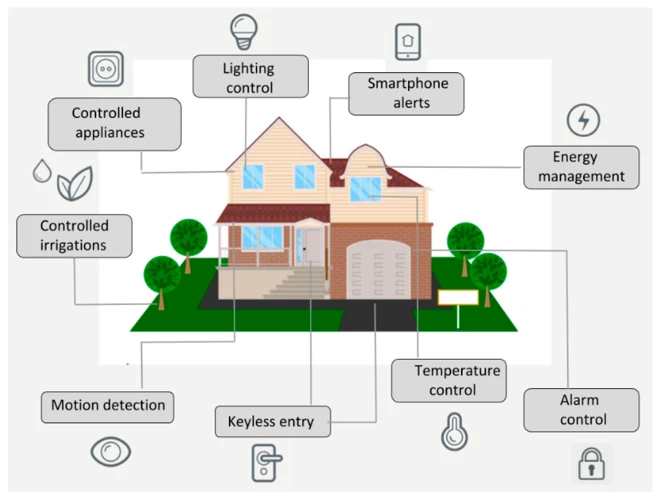
As we strive towards a more automated and individualized living experience, the integration of obstacle detection and avoidance with smart home automation provides a range of benefits. The use of sensor technology and mapping systems enables devices to navigate around obstacles, leading to enhanced efficiency, safety, and control. It is these advantages that make integrating obstacle detection and avoidance technology an attractive option for smart homes. In fact, the rise in popularity of smart vacuum cleaners (linking to /smart-vacuum-obstacle-performance/) that utilize obstacle detection technology underscores the demand for this kind of automation. Let’s delve deeper into the benefits of bringing these two technologies together.
1. Enhanced Efficiency
With the integration of obstacle detection and avoidance technology into smart home automation, homeowners can experience enhanced efficiency in their daily routines. This technology streamlines household tasks and allows for greater productivity through the optimization of home devices. Below are some examples of how integrating obstacle detection and avoidance with smart home automation can enhance efficiency:
| Example | Description |
|---|---|
| Smart Vacuum Cleaners | With obstacle detection and avoidance technology, smart vacuum cleaners can navigate around furniture and other obstacles within a home with ease. This eliminates the need for manual control or supervision, and allows homeowners to focus on other tasks while their floors are being cleaned. |
| Smart Irrigation Systems | Integrating obstacle detection and avoidance technology with a smart irrigation system allows for precise irrigation of plants and lawn areas. Sensors can detect obstacles such as rocks or other objects, ensuring that water is only distributed where it is needed. This technology conserves water and saves homeowners money on their water bills. |
| Smart Kitchen Appliances | Obstacle detection and avoidance can also be integrated into kitchen appliances such as stoves, ovens, and refrigerators. This technology allows devices to sense obstacles such as open cabinet doors or items blocking their path, and adjust their movements or actions accordingly. This minimizes accidents and damage to both the devices and the surrounding area. |
These are just a few examples of how obstacle detection and avoidance can enhance efficiency in smart home automation. By automating household tasks and optimizing device movements, homeowners can save time and energy, allowing for a more productive and efficient lifestyle.
2. Improved Safety
Smart home automation devices equipped with obstacle detection and avoidance capabilities offer numerous benefits, including improved safety. By detecting and avoiding obstacles, these devices are able to prevent accidents and injuries, giving homeowners peace of mind. Let’s take a closer look at the ways in which integrating obstacle detection and avoidance with smart home automation can improve safety.
Table: Benefits of Improved Safety in Smart Home Automation
| Benefit | Description |
|---|---|
| Prevents Accidents and Injuries | Obstacle detection and avoidance technology ensures that smart home devices, such as vacuum cleaners and robotic lawnmowers, do not collide with people or pets, reducing the risk of accidents and injuries in the home. |
| Reduces Property Damage | Smart home devices equipped with obstacle detection and avoidance technology are able to navigate around furniture and other obstacles, reducing the risk of damage to the home and its contents. |
| Enhances Family Security | Smart home devices with obstacle detection and avoidance capabilities can also be used to detect intruders and send alerts to homeowners, enhancing family security and providing added peace of mind. |
In addition to preventing accidents and injuries, obstacle detection and avoidance technology can also reduce property damage. By navigating around furniture and other obstacles, smart home devices are less likely to bump into objects and cause damage. This can include scratching floors, knocking over vases or décor, or bumping into walls.
Perhaps even more importantly, obstacle detection and avoidance technology can enhance family security by detecting intruders or other potential threats. With the help of surveillance cameras and other security systems equipped with this technology, homeowners can receive alerts and take action to protect their families and property.
However, it’s important to note that integrating obstacle detection and avoidance with smart home automation also poses some challenges and limitations. These include price and accessibility, accuracy and reliability, and privacy and security concerns. It’s crucial for homeowners to do their research and choose devices and systems that meet their needs while prioritizing safety and security.
3. Greater Control
One of the major benefits of integrating obstacle detection and avoidance technology with smart home automation is the greater control it provides to users. With this technology, individuals can have more control over their smart home devices without having to constantly monitor them.
Here are some ways obstacle detection and avoidance technology provides greater control:
- Automated Cleaning: With obstacle detection and avoidance technology integrated into a smart vacuum cleaner, individuals can schedule automated cleaning sessions without having to worry about their device getting stuck or running into obstacles. As a result, they have greater control over the cleanliness of their home and can focus on other tasks.
- Customized Navigation: Obstacle detection and avoidance technology can help smart devices to navigate around obstacles in a way that is customized to the layout of the individual’s home. This means that users have greater control over the movement and navigation of their devices, ensuring that they efficiently and effectively clean or perform their intended task.
- Remote Control: Integrated with smart home devices, obstacle detection and avoidance technology allows individuals to remotely control their devices using their smartphones or other connected devices. This extra level of control is particularly useful when users are away from home, allowing them to keep track of what is happening in their home and ensuring that everything is running smoothly.
- Scheduled Cleaning: Obstacle detection and avoidance technology allows users to schedule cleaning sessions or other tasks for their smart home devices. With this feature, individuals have greater control over precisely when and how their devices perform specific jobs, allowing them to manage their time more effectively and stay on top of household cleaning, cooking, and other tasks.
Integrating obstacle detection and avoidance technology with smart home automation provides users with greater control over their devices, making it easier to manage and maintain their homes. With automated and customized navigation, remote control, and scheduled cleaning, individuals have more time and energy to devote to other important tasks.
How Obstacle Detection and Avoidance Works in Smart Home Automation

Smart home automation has come a long way in recent years, and one of the most exciting developments is the integration of obstacle detection and avoidance technology. This sophisticated system allows smart home devices to navigate around obstacles in real-time, making them more efficient and safer to use. But how exactly does this technology work? Let’s dive deeper into the inner workings of obstacle detection and avoidance in smart home automation.
1. Sensor Technology
When it comes to obstacle detection and avoidance in smart home automation, sensor technology plays a crucial role in making this innovation possible. Sensors are devices that can detect, measure and respond to physical inputs such as light, sound, temperature, pressure and proximity. A variety of sensors and technologies are used for obstacle detection and avoidance in smart home automation systems.
Here are some of the most common sensors used in smart home automation:
| Type of Sensor | Description |
|---|---|
| Infrared Sensors | These sensors use infrared light to detect obstacles in their field of view. They emit an infrared beam and measure the reflection of that beam from nearby objects. |
| Ultrasonic Sensors | These sensors use ultrasonic sound waves to detect obstacles. They work by emitting high-frequency sound waves and measuring the reflection of those waves off nearby objects. |
| Laser Sensors | Laser sensors use laser beams to detect obstacles. They emit a low-powered laser beam and measure the reflection of that beam off nearby objects. They are highly precise and accurate, but also expensive. |
| Camera Sensors | These sensors use visual detection methods to identify obstacles. They analyze the images captured by cameras mounted on the smart home device to detect and avoid obstacles. |
Each type of sensor has its own strengths and limitations, but combining multiple sensors can provide a more comprehensive obstacle detection and avoidance solution. Some smart home automation systems use a combination of these sensors to ensure that obstacles are detected and avoided effectively.
In addition to sensors, smart home automation systems use other technology such as microprocessors, algorithms and artificial intelligence to process the data collected by sensors and control the movement of devices. These systems can perform complex calculations, analyze data in real-time and make decisions based on that analysis.
The use of sensor technology in combination with other smart home automation technologies is what makes obstacle detection and avoidance a reality. Smart home devices equipped with advanced sensor technology can detect and avoid obstacles, thus providing greater efficiency, safety and control within the home.
2. Mapping and Planning
Mapping and Planning play a crucial role in obstacle detection and avoidance with Smart Home Automation. It enables the robot to navigate and avoid obstacles using the most efficient way possible.
Mapping is the process of creating a detailed representation of the robot’s environment. It involves using various sensors such as LIDAR, ultrasonic, and camera sensors to measure distances, detect objects, and determine the layout of the room. Once the data is collected, it is organized and processed to create a digital map of the room, which the robot can then use to efficiently navigate and move around the space.
Planning is the process of creating a path for the robot to follow while avoiding any obstacles that may be present in the environment. The robot uses the map created during the mapping process to plan the most efficient and safe path from its starting point to its destination. The path planning algorithm takes into account the size and shape of the robot, the location and shape of obstacles, and other variables to determine the best path to follow.
The following table summarizes the Mapping and Planning process in Smart Home Automation:
| Process | Description |
|---|---|
| Mapping | The process of creating a detailed digital representation of the robot’s environment. |
| Input Data | Data from sensors such as LIDAR, ultrasonic, and cameras that measure distance, detect objects, and determine the layout of the room. |
| Data Processing | The collected data is organized and processed to create a digital map of the room. |
| Output | A digital map of the room that the robot can use to navigate and move around the space. |
| Planning | The process of creating a path for the robot to follow while avoiding any obstacles that may be present in the environment. |
| Input Data | Data from the digital map, size and shape of robot, location and shape of obstacles, and other variables that determine the best path to follow. |
| Data Processing | An algorithm takes in the input data and determines the most efficient and safe path for the robot to follow. |
| Output | A path plan for the robot to follow while avoiding obstacles in its environment. |
Mapping and planning are essential for the effectiveness and reliability of obstacle detection and avoidance technology. By integrating these processes with Smart Home Automation devices, users can ensure that their devices are not only efficient and effective but also safe to use.
3. Navigation and Movement
Navigation and movement are crucial components of obstacle detection and avoidance in smart home automation. Once the sensors have detected and mapped the obstacles, the smart device must determine the appropriate course of action to avoid them. This is where sophisticated navigation and movement strategies come into play.
Navigation Strategies
Navigation in smart home automation is typically achieved through the use of algorithms that take into account the location of the obstacles, the device’s current position, and the desired destination. One common navigation strategy is the use of point-to-point navigation. This involves dividing the device’s path into smaller segments, with each segment representing a single movement action. The algorithm then calculates the optimal path for the device to navigate through each segment, taking into account any obstacles that may be present.
Another navigation strategy that is gaining popularity in smart home automation is the use of SLAM (Simultaneous Localization and Mapping) algorithms. This technology allows a device to simultaneously map its environment and determine its location within that environment. As the device moves, it can continually update its map and location, making it easier to navigate around obstacles.
Movement Strategies
Once the navigation strategy has been determined, the smart device must determine the appropriate movement strategy to avoid obstacles. One movement strategy that is commonly used in smart vacuum cleaners is the use of a bumper sensor. These sensors detect when the device has come into contact with an obstacle and signals the device to change its movement direction.
Another movement strategy that is gaining in popularity is the use of LIDAR (Light Detection and Ranging) sensors. These sensors emit laser beams that bounce back off of obstacles in the device’s path. The device then uses this information to determine the location, shape, and size of the obstacles, allowing it to easily navigate around them.
| Navigation Strategies | Movement Strategies |
|---|---|
| Point-to-Point Navigation | Bumper Sensor |
| SLAM Algorithms | LIDAR Sensors |
Overall, navigation and movement strategies are essential parts of obstacle detection and avoidance in smart home automation. By using advanced algorithms and sensors, smart devices can efficiently navigate through complex environments, avoiding obstacles and enhancing their overall performance. As technology continues to evolve, we can expect to see even more sophisticated navigation and movement strategies emerge, making smart home automation even more convenient and efficient.
4. Remote Control and Scheduling
In addition to sensor technology, mapping and planning, and navigation and movement, remote control and scheduling are important components of obstacle detection and avoidance in smart home automation. By utilizing these features, users can have even greater control and convenience when it comes to home maintenance and cleaning.
Remote Control:
Many smart vacuum cleaners and other home devices come with a mobile application that allows users to control and monitor their devices from anywhere. With remote control, users can easily start and stop tasks, adjust settings, and even receive status updates on their devices in real-time. This means that even if the user is not physically present in their home, they can still ensure that it is being cleaned and taken care of properly.
Scheduling:
Scheduling is another handy feature that can save users time and effort. With scheduling, users can program their smart home devices to automatically start and stop tasks at specific times of the day or week. For example, a user could program their robot vacuum cleaner to clean the house every Monday at 9 am, or their automatic lawn mower to mow the lawn every Saturday at noon. This takes the responsibility out of the user’s hands and ensures that their home is always clean and maintained on schedule.
To further enhance the user experience, some smart home devices even allow for voice control in addition to remote control and scheduling. This means that users can simply speak commands to their devices, rather than having to manually program them or use their mobile application. Additionally, the integration of obstacle detection and avoidance with other smart home devices such as smart thermostats and security systems can enhance overall home automation efficiency and convenience.
It should be noted, however, that there are potential challenges and limitations when it comes to integrating obstacle detection and avoidance with smart home automation. For example, cost and accessibility may be an issue for some users who cannot afford the higher prices of smart home devices. Accuracy and reliability can also be a concern, as even the most advanced technology may not be foolproof. Finally, privacy and security must be carefully considered when integrating smart home devices, as they may be susceptible to hacking and data breaches.
| Pros | Cons |
| Convenient and time-saving | May be costly or inaccessible for some users |
| Allows for greater control and monitoring of devices | Accuracy and reliability may be an issue |
| Can be integrated with voice control and other smart home devices | Privacy and security concerns must be considered |
Despite these potential challenges, the integration of obstacle detection and avoidance with smart home automation offers many benefits for users. With the ability to remotely control and schedule their devices, users can have greater efficiency, safety, and control over their home maintenance. As technology continues to advance, the possibilities for smart home automation are endless.
Integrating Obstacle Detection and Avoidance with Other Smart Home Devices
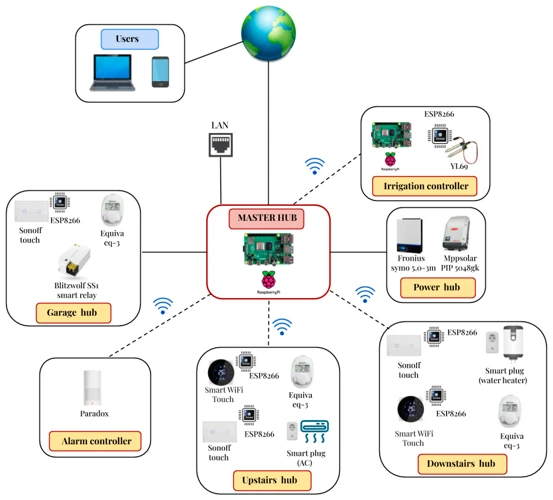
As smart home automation continues to advance, the possibilities for integration become more and more exciting. One particularly intriguing area is the integration of obstacle detection and avoidance technology with other smart devices. By seamlessly connecting these technologies, homeowners can benefit from a fully integrated and automated home that operates with unparalleled efficiency and convenience. In this section, we’ll explore the benefits and challenges of integrating obstacle detection and avoidance technology with other smart home devices, using cutting-edge sensor technology and advanced mapping techniques.
1. Voice Control Assistants
Voice control assistants have become an integral part of smart home automation. With just a few words, homeowners can easily control their smart home devices without the need for a physical remote or even getting up from their couch. The integration of obstacle detection and avoidance with voice control assistants can further enhance the convenience and ease of managing smart home devices.
Here are some benefits of integrating obstacle detection and avoidance with voice control assistants in smart homes:
- Seamless device control: Voice control assistants such as Amazon Alexa and Google Assistant can work alongside smart vacuum cleaners equipped with obstacle detection and avoidance technology. Homeowners can easily give commands to their voice assistants to start or stop the vacuum cleaner, and the smart device will navigate around obstacles it encounters while cleaning.
- Optimized performance: Integrating obstacle detection and avoidance with voice control assistants can enhance the performance of smart home devices. With obstacle detection technology, smart devices can identify and avoid obstacles, reducing the risk of damage and improving its overall efficiency.
- Effortless scheduling: Homeowners can also use voice control assistants to schedule cleaning tasks for their smart vacuum cleaner equipped with obstacle detection and avoidance technology, even remotely. With Google Assistant or Amazon Alexa, homeowners can create commands to set up a cleaning schedule that suits their daily routines, making it more convenient and easy to manage their smart home devices.
However, it’s important to note that integrating obstacle detection and avoidance with voice control assistants does come with some challenges, including privacy concerns and reliability issues. Despite these limitations, the integration of these technologies is still an innovative step towards achieving a more convenient and efficient smart home experience for homeowners.
2. Smart Thermostats and Lighting Systems
Smart thermostats and lighting systems are two popular additions to the modern smart home. They can help reduce energy consumption and costs while providing greater comfort and convenience for the household. By integrating obstacle detection and avoidance with these devices, smart homes can become even more efficient and intelligent.
Smart Thermostats:
- Obstacle detection and avoidance can help smart thermostats to better understand the layout of the home, including furniture and other fixtures. This can enhance their ability to regulate temperature accurately and efficiently.
- With obstacle detection and avoidance, smart thermostats can also detect when a room is empty, and adjust the temperature accordingly to save energy.
- By utilizing obstacle detection and avoidance in combination with geofencing technology, smart thermostats can recognize when residents are away from home or approaching, and adjust the temperature accordingly.
Lighting Systems:
- Obstacle detection and avoidance can be used to create smarter lighting systems that react to the presence or movement of individuals in a room. For example, lights can be set to turn on automatically when someone enters a room and turn off when they leave.
- Obstacle detection and avoidance can also be used to adjust lighting levels and colors depending on the time of day, amount of natural light entering the room, and the presence of obstacles.
- By integrating obstacle detection and avoidance with voice assistants, smart lighting systems can be controlled using voice commands, making them even more intuitive and convenient for the user.
Integrating obstacle detection and avoidance technology into smart thermostats and lighting systems can improve energy efficiency, comfort, and convenience in the home. However, it is important to address any potential privacy and security concerns associated with these integrations to ensure that the benefits of smart home automation are balanced with personal safety and security.
3. Surveillance Cameras and Security Systems
When it comes to integrating obstacle detection and avoidance with smart home automation, surveillance cameras and security systems play a crucial role. These devices provide an extra layer of protection to the home, detecting potential dangers and alerting homeowners to potential threats.
The benefits of integrating surveillance cameras and security systems with obstacle detection and avoidance include:
- Real-time monitoring and alerts: Surveillance cameras can detect and alert homeowners to potential intruders, while obstacle detection technology ensures that the camera itself doesn’t trigger false alarms by mistaking harmless objects for threats.
- Efficient security management: By integrating cameras and sensors, homeowners can more effectively manage their home security, keeping a watchful eye on every corner of their property and catching any potential hazards.
- Remote control and monitoring: Smart home automation allows homeowners to control their security systems remotely, making it easy to monitor their home and receive alerts through their mobile devices.
- Improved safety: Security systems and obstacle detection technology can work together to ensure that the home is safe from potential threats. By detecting and avoiding obstacles, and alerting homeowners to potential intruders, these technologies can help to prevent accidents and burglaries.
However, there are some challenges and limitations to consider when integrating surveillance cameras and security systems with obstacle detection and avoidance:
- Privacy concerns: Homeowners must be careful to ensure that their security systems do not infringe on the privacy of themselves or their neighbors. For example, cameras should be aimed away from public spaces and should not capture private conversations.
- Accuracy and reliability: Security systems and obstacle detection technology must be accurate and reliable, as false alarms or missed alerts can put the home and its inhabitants at risk.
- Cost and accessibility: Advanced security systems and obstacle detection technology can be costly to install and maintain, making them less accessible to some homeowners.
The future of security systems and obstacle detection technology:
As technology continues to evolve, we can expect to see even more advanced security systems that are capable of detecting and avoiding obstacles with greater accuracy and reliability. As the price of these systems continues to fall, they will become more accessible to homeowners who want to improve their home security. With the growth of smart home automation and the Internet of Things (IoT), we can expect to see more intelligent and interconnected security systems that can communicate with other smart devices in the home to provide even greater protection.
Challenges and Limitations of Obstacle Detection and Avoidance with Smart Home Automation
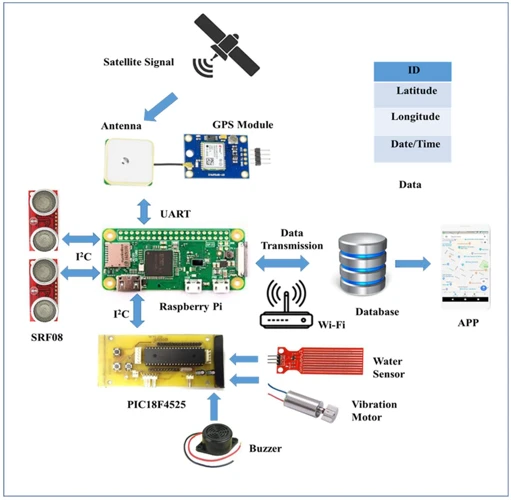
As with any emerging technology, there are always challenges and limitations that need to be considered. Obstacle detection and avoidance in smart home automation is no exception. While the benefits are clear, there are still hurdles to overcome before this technology can become widely accessible and reliable. In this section, we will explore some of the obstacles that currently limit the integration of obstacle detection and avoidance with smart home automation. From cost and accessibility to accuracy and privacy concerns, it is important to understand the limitations and work towards finding solutions to overcome them.
1. Price and Accessibility
When it comes to integrating obstacle detection and avoidance with smart home automation, one of the biggest challenges is price and accessibility. At present, this technology is relatively new and can be expensive, making it inaccessible to many homeowners. Additionally, many of the sensors used for obstacle detection and avoidance can impact the overall cost of implementing such systems.
Here are some key factors that impact price and accessibility:
- Sensor technology: The cost of sensors plays a significant role in the overall cost of integrating obstacle detection and avoidance. Sophisticated sensors can be more expensive, making it challenging for homeowners to invest in this technology.
- Compatibility: Compatibility is another factor that affects the price and accessibility of integrating obstacle detection and avoidance with smart home automation. Not all smart home devices are compatible with each other, which can make it difficult to establish a seamless integration.
- Installation: Installation can also add to the costs of integrating obstacle detection and avoidance with smart home automation, especially if it requires a professional installation.
Despite these challenges, more and more companies are developing and releasing products that are more affordable and with easier installation options. As the technology continues to evolve and become more popular, it is expected that the cost of implementation will continue to decrease, making it more accessible to the average homeowner.
Additionally, regulatory support and subsidies can create more accessibility for low-income households. Some governments around the world have already taken steps in this direction, providing incentives and subsidies to encourage the use of smarter and more environmentally-friendly technology in homes.
While price and accessibility remain challenging obstacles in integrating obstacle detection and avoidance with smart home automation, it is important to keep in mind the long-term benefits that this technology can provide in terms of efficiency and safety. As the technology becomes more widely adopted, it is expected that these costs will lessen as the manufacturing costs decrease and the technology became more attainable.
2. Accuracy and Reliability
Accuracy and reliability are crucial factors when it comes to integrating obstacle detection and avoidance with smart home automation. Here are some of the issues to consider:
- Environmental Factors: The accuracy and reliability of sensors used in obstacle detection and avoidance can be affected by environmental factors such as lighting conditions and room layout. For example, dark rooms or rooms with a lot of furniture can make it difficult for sensors to accurately detect obstacles.
- Hardware Quality: The quality of the hardware used in smart home devices can significantly affect their accuracy and reliability. Devices with poor quality sensors or processors are more likely to have accuracy and reliability issues.
- Data Quality: Accurate and reliable obstacle avoidance and detection depend on high-quality data inputs. If the data from sensors is noisy or corrupted, it can cause errors in the device’s decision-making process.
- Updates and Maintenance: Keeping smart home devices up to date and maintained is essential to ensure their accuracy and reliability over time. Firmware updates and regular maintenance can help reduce the risk of malfunctions and optimize performance.
- Interference: Interference from other wireless devices operating on the same frequency can cause accuracy and reliability issues. Any interference caused by other smart home devices should be addressed to ensure maximum efficiency and reliability.
These factors illustrate that accuracy and reliability are essential considerations when integrating obstacle detection and avoidance with smart home automation. Ensuring high-quality hardware, data, and maintenance can help mitigate the issues and improve overall performance.
3. Privacy and Security
When it comes to integrating obstacle detection and avoidance with smart home automation, one significant concern that homeowners may have is the issue of privacy and security. Here are some factors to consider:
- Collection of data: Devices with obstacle detection and avoidance technology usually collect data about the home’s residents and their habits, such as their movements and schedules. This data can be used to optimize the devices’ performance, but it’s essential to select devices with strong privacy policies and control over data sharing to ensure that users’ privacy is respected.
- Connected devices: The integration of obstacle detection and avoidance technology with other smart home devices creates a network that presents security threats if not correctly secured. If a hacker gains access to one device, they can often access all the devices connected to the network.
- Remote monitoring: With obstacle detection and avoidance technology, homeowners can often monitor their homes remotely. However, remote monitoring also presents privacy and security challenges, especially if the device has access to sensitive areas of the user’s home or personal information.
- Unauthorized access: Devices with obstacle detection and avoidance can help keep intruders out, but they can also be hacked or manipulated to allow unauthorized people access to the house. It’s crucial to choose devices with high-security features and update their software regularly to avoid such incidents.
In short, homeowners seeking to integrate obstacle detection and avoidance technology with their smart home automation systems must prioritize privacy and security at all stages, from selecting the device to installation to regular maintenance. In this way, the technology can be a valuable addition to their homes without compromising their safety and privacy.
The Future of Obstacle Detection and Avoidance with Smart Home Automation
As technology continues to advance, the future of obstacle detection and avoidance with smart home automation looks promising. With the integration of artificial intelligence and machine learning, smart home devices will become even more sophisticated in detecting and avoiding obstacles.
Artificial Intelligence and Machine Learning
One of the main advancements in obstacle detection and avoidance is the integration of artificial intelligence and machine learning. By utilizing these technologies, smart home devices can become smarter and more efficient in navigating around obstacles. Machine learning algorithms allow devices to learn from their mistakes and improve their obstacle detection and avoidance abilities over time. This means that as smart home devices are used more frequently, they will become even more adept at avoiding obstacles and improving their overall performance.
Increased Integration with Other Smart Home Devices
In the future, obstacle detection and avoidance will become even more integrated with other smart home devices. For example, smart vacuum cleaners could integrate with smart lighting systems to automatically turn on the lights in a room before cleaning it, and then turn them off when the cleaning is complete. Additionally, obstacles detected by smart surveillance cameras could be relayed to smart thermostats to adjust the temperature in the room accordingly. This increased integration will create a more seamless and efficient smart home ecosystem.
Enhanced Efficiency and Adaptability
As obstacle detection and avoidance technology continues to improve, smart home devices will become even more efficient and adaptable to different environments. They will be able to detect and respond to a wider range of obstacles, including objects with irregular shapes and surfaces. Additionally, they will be better able to navigate around dynamic obstacles, such as pets or children, without causing harm or damage.
Expanded Use Cases
Currently, the primary use case for obstacle detection and avoidance technology in smart home automation is in smart vacuum cleaners. However, as the technology improves, it could be applied to a wider range of devices and applications. For example, obstacle detection and avoidance could be used in robotic lawnmowers, drones, and even autonomous vehicles.
The future of obstacle detection and avoidance with smart home automation looks bright. With the integration of artificial intelligence and machine learning, increased integration with other smart home devices, enhanced efficiency and adaptability, and expanded use cases, obstacle detection and avoidance technology will become even more advanced and useful in the coming years.
Conclusion
In conclusion, integrating obstacle detection and avoidance with smart home automation offers numerous benefits that enhance efficiency, improve safety, and provide greater control over your home devices. By utilizing sensor technology, mapping and planning, navigation and movement, remote control, and scheduling, you can create a more streamlined and efficient home automation system that responds to your needs in real-time.
While there are some challenges and limitations that come with implementing obstacle detection and avoidance, such as price and accessibility, accuracy and reliability, and privacy and security concerns, these can be overcome with careful planning and consideration.
Looking to the future, we can expect even more advanced obstacle detection and avoidance technology that is more accessible and affordable to everyday consumers. With the rise of artificial intelligence and machine learning, smart home automation will continue to become more intelligent and intuitive, allowing us to create homes that are safer, more comfortable, and more efficient than ever before. So, take the first step and start exploring your options for integrating obstacle detection and avoidance into your smart home automation system today.
Frequently Asked Questions
What is obstacle detection and avoidance in smart home automation?
Obstacle detection and avoidance is the capability of smart home devices to sense and navigate around obstacles in their path, ensuring smooth and efficient operation without causing any damage.
How does obstacle detection and avoidance benefit smart home automation?
Obstacle detection and avoidance enhances the efficiency, safety, and control of smart home automation, making it easier and more accessible for users to manage their households and devices.
What sensor technology is used in obstacle detection and avoidance?
Sensor technology used in obstacle detection and avoidance in smart home automation includes infrared, sonar, laser, and camera-based sensors.
How does mapping and planning work in obstacle detection and avoidance?
Mapping and planning involve the creation of a map of the smart home environment, which is used to plan and optimize the movement of devices to avoid obstacles and navigate efficiently around the space.
How does navigation and movement work in obstacle detection and avoidance?
Navigation and movement involve the use of sensors, mapping, and planning to ensure that smart home devices move around the environment without bumping into obstacles or causing any damage.
What is remote control and scheduling in obstacle detection and avoidance?
Remote control and scheduling allow users to control their smart home devices from a distance, and schedule when these devices should operate to avoid obstacles and optimize performance.
Can obstacle detection and avoidance be integrated with voice control assistants?
Yes, obstacle detection and avoidance can be integrated with voice control assistants, allowing users to control their smart home devices using voice commands while ensuring efficient and safe operation.
What is the role of smart thermostats and lighting systems in obstacle detection and avoidance?
Smart thermostats and lighting systems can be used to optimize the performance of smart home devices by adjusting the temperature and lighting conditions in the environment, ensuring safe and efficient operation.
Can obstacle detection and avoidance be integrated with surveillance cameras and security systems?
Yes, obstacle detection and avoidance can be integrated with surveillance cameras and security systems to enhance the safety and security of the smart home environment, by alerting users of any irregularities or potential risks.
What are the challenges and limitations of obstacle detection and avoidance in smart home automation?
The challenges and limitations of obstacle detection and avoidance in smart home automation include price and accessibility, accuracy and reliability, and privacy and security concerns.


